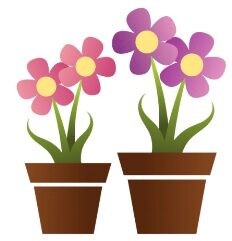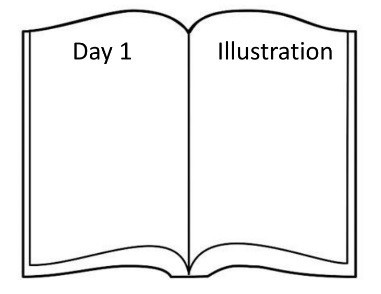
Overview
Title: Flower Power
Grade Level: 4th Grade
Duration: 45 Minute session for each activity
Standards
Science – SC.4.L.17.3
Trace the flow of energy from the Sun as it is transferred along the food chain through the producers to the consumers.
Hypothesis
Can a plant live without direct access to sunlight?
Purpose
In this two part experiment; students will investigate the need a plant has for the sun’s energy. Students will learn about the life cycle of a seed, its process. After,students will apply their knowledge in Step Two comparing two living plants. In Step Two; they will place one plant in direct sunlight and the other in partial sunlight. This experiment will take several days to conclude. Therefore, observations should be made daily and written in a Science Log.
Vocabulary
Producers • Consumers • Food Chain • Flow • Energy • Transfer • Photosynthesis • Cellular • Symbiotic • Chloroplast • Chlorophyll • Stomata
Essential Question
How is the flow of the Sun’s energy transferred along the food chain, from the producers to the consumers?
Background Information
Energy Cycle in Living Things
The symbiotic relationship between plant and animal life is incredible! Food chains show how each living thing gets its food and how all food chains start with the energy from the sun. This energy is captured by plants, through small energy pockets which helps in the transformation of the process needed for life. These small energy pockets are called chloroplasts. They use the energy from the sun along with carbon dioxide and water to create a process called photosynthesis, which in turn helps produce sugars
Plants are called producers; because they can produce their own food. The living part of a food chain always starts with plant life and ends with an animal. All animals including humans are called consumers. Consumers cannot make their own food, so they need to consume (eat) plants and/or animals. Consumers use the sugars made from plants in their own cellular energy factories to complete the cycle. These high-energy factories helps supply the energy we need to do just about everything.
Materials
- 6 Sheets of Computer Paper
- Stapler
- Pencil
- Colored Pencils/Crayons/Markers
- 2 Plants
Procedure
Step One: Background Information
1. Plants are called autotrophs because they can use energy from the sunlight to synthesize, or make, their own food source. Many people believe they are “feeding” a plant when they put it in soil, water it, or place it outside in the Sun, but none of these things are considered food. Rather, plants use sunlight, water, and the gases in the air to make glucose, which is a form of sugar that plants need to survive. This process is called photosynthesis and is performed by all plants, algae, and even some other microorganisms. To perform photosynthesis, plants need three things: carbon dioxide, water, and sunlight.
2. Teach the cycle of a plant’s life. The following video shows how a seed grows, its process and how important the SUN’s energy really is: Photosynthesis: Educational Video for Kids.
3. After a discussion on the plant cycle, hand students the worksheet below and/or show on Interactive board. Step Four: Review Plants & Photosynthesis worksheet Step Five: Then hand the a blank copy. Step Six: Have them fill out where they think the words should be placed/labeled. Step Seven: Review answers.
4. Review Plants & Photosynthesis worksheet.
5. Then hand them a blank copy.
6. Have them fill out where they think the words should be placed/labeled.
7. Review answers.
Plants & Photosynthesis - Dissect Worksheet
Directions: Using the words below; have students draw a line toward the correct arrow(s) to label the plant.
Plants & Photosynthesis - Label Its Parts Worksheet
Step Two:
- Have students create their own Science Log
- Students will fold 6 sheets of paper in half vertically.
- Place each sheet inside the other to create a booklet.
- Have students staple the booklet in 3 places to ensure that the pages are.
- Securely fasten together.
- Students can decorate the cover.
- Each page should be titled Day 1-Day 58.
- On the opposite side of each page it should be titled Illustration.
- Have students write and draw their observations daily.

